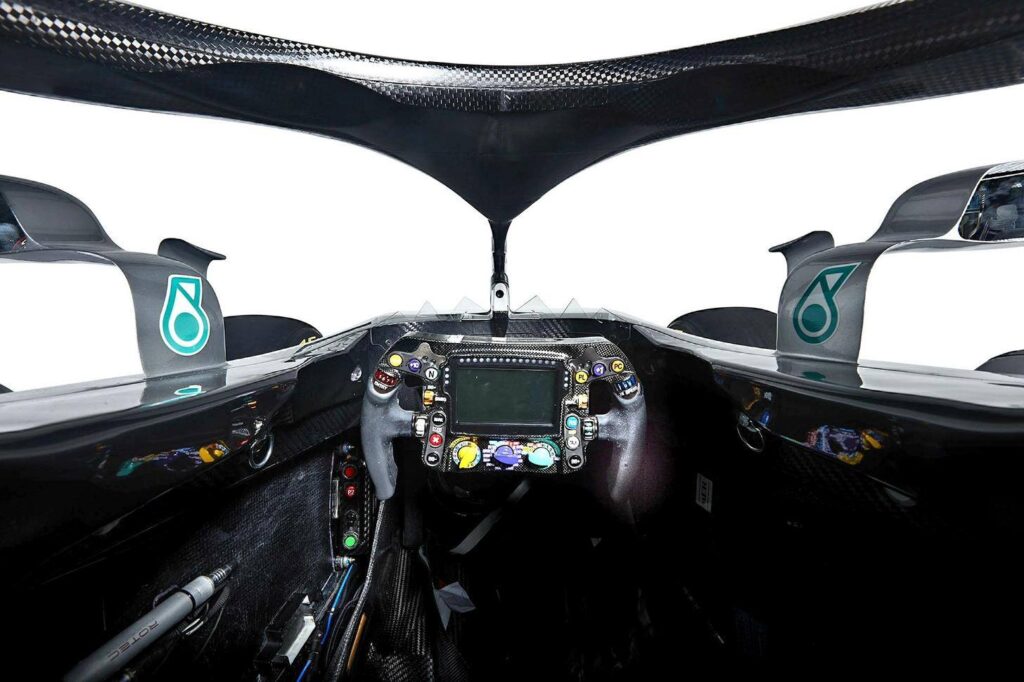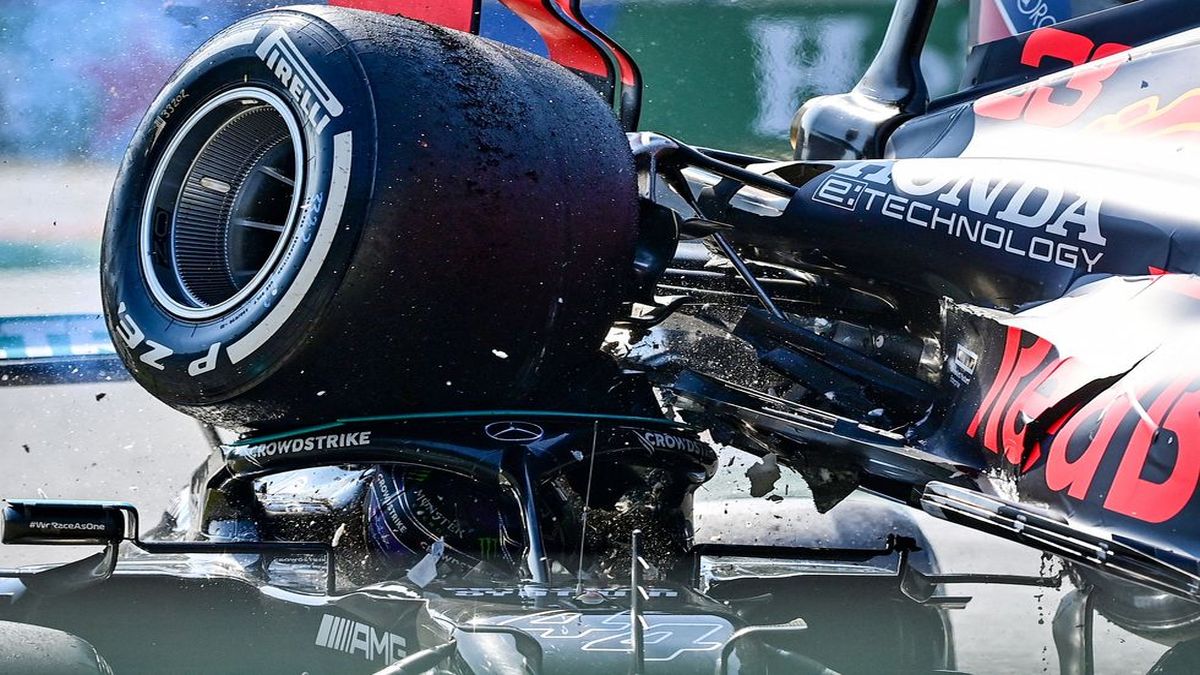In the accident between Max Verstappen and Lewis Hamilton at Monza during the F1 Italian Grand Prix, the Halo system once again played a decisive role. If the responsibilities in the clash between Lewis Hamilton and Max Verstappen divide (as always) the opinions of experts and fans, there is an element that should all agree. The surreal scene that occurred at the first variant, and its final image with Red Bull bypassing Mercedes, have demonstrated the total usefulness of Halo as the main safety system in the cockpit of F1 cars. Despite being shot in the head and neck, Hamilton was unharmed, but just a few years ago the consequences could have been dramatic.
What is the Halo system, the life saver that not everyone in F1 liked
Introduced in 2018, Halo is a rugged protective gear mounted over the driver’s head in the cockpit of all Formula 1 cars. Basically it is a three-pronged bar designed to prevent or deflect large pieces of debris, such as bits and pieces. of barriers that are on the track or wheels of another vehicle, from entering the passenger compartment and therefore seriously endangering the driver’s safety. Halo stems from the FIA’s commitment to introduce some form of additional protection around the cockpit to reduce the risk of drivers’ head injuries due, as mentioned, to flying debris, which have often been the culprits of many fatalities or injuries. serious to drivers in the years prior to its introduction.
Halo is made in Grade 5 titanium, material born above all to be used in the aerospace industry. Its best features are thehigh strength and stiffness combined with an extremely low weight, equal to 9 kg, therefore ideal to be installed on an F1 racing car.
All teams were consulted before it became mandatory and drivers tested Halo in free practice sessions in the year prior to its introduction. And while it was pretty clear how Halo could be instrumental in pilots’ safety, opinion was split between for and against.
The introduction of Halo effectively put an end to the idea of fully open cockpit racing. The discussion at the time centered on the aesthetics of the device the FIA wanted to introduce, rather than the benefits it would bring in terms of safety. A clear cockpit shield was seen as an alternative (designed by Red Bull), but proved unusable after it Sebastian Vettel he claimed that this latter device made him dizzy after just one lap of the track.
 The pilot’s view with the Halo system
The pilot’s view with the Halo system
Halo, therefore, was the only device tested, capable of deflecting a shot wheel at a speed of 240 km / h mph and providing an unobstructed view for the pilot.
The president of the Grand Prix Drivers’ Association, Alexander Wurz, he declared at the time: “We drivers respect the FIA’s position on safety and support its ongoing quest to make racing safer. “Over the last few decades, we have seen increasing speeds and ever faster lap times and this latest pursuit of racing is only possible thanks to increased safety.”
One of the biggest detractors of Halo was Toto Wolff who at the presentation of the 2018 Mercedes stated in no uncertain terms “If they gave me a chainsaw I would take it off”. Thoughts, which after yesterday, have changed drastically, as the Mercedes team principal, at the end of yesterday’s race, declared “Halo has certainly saved Lewis’ life today. It would have been a horrible accident, which I don’t even want to think about, if we didn’t have Halo. ”
 The accident between Charles Leclerc and Fernando Alonso in the 2018 Belgian GP
The accident between Charles Leclerc and Fernando Alonso in the 2018 Belgian GP
In addition to Lewis Hamilton, to thank those who made Halo mandatory on all Formula 1 cars were, among others, Charles Leclerc that was seen flying over the head of the McLaren’s Fernando Alonso during the 2018 Belgian GP, e Romain Grosjean, who despite his Haas having broken in two, came out battered but unharmed in the accident that occurred in the 2020 Bahrain GP.
















Leave a Reply
View Comments